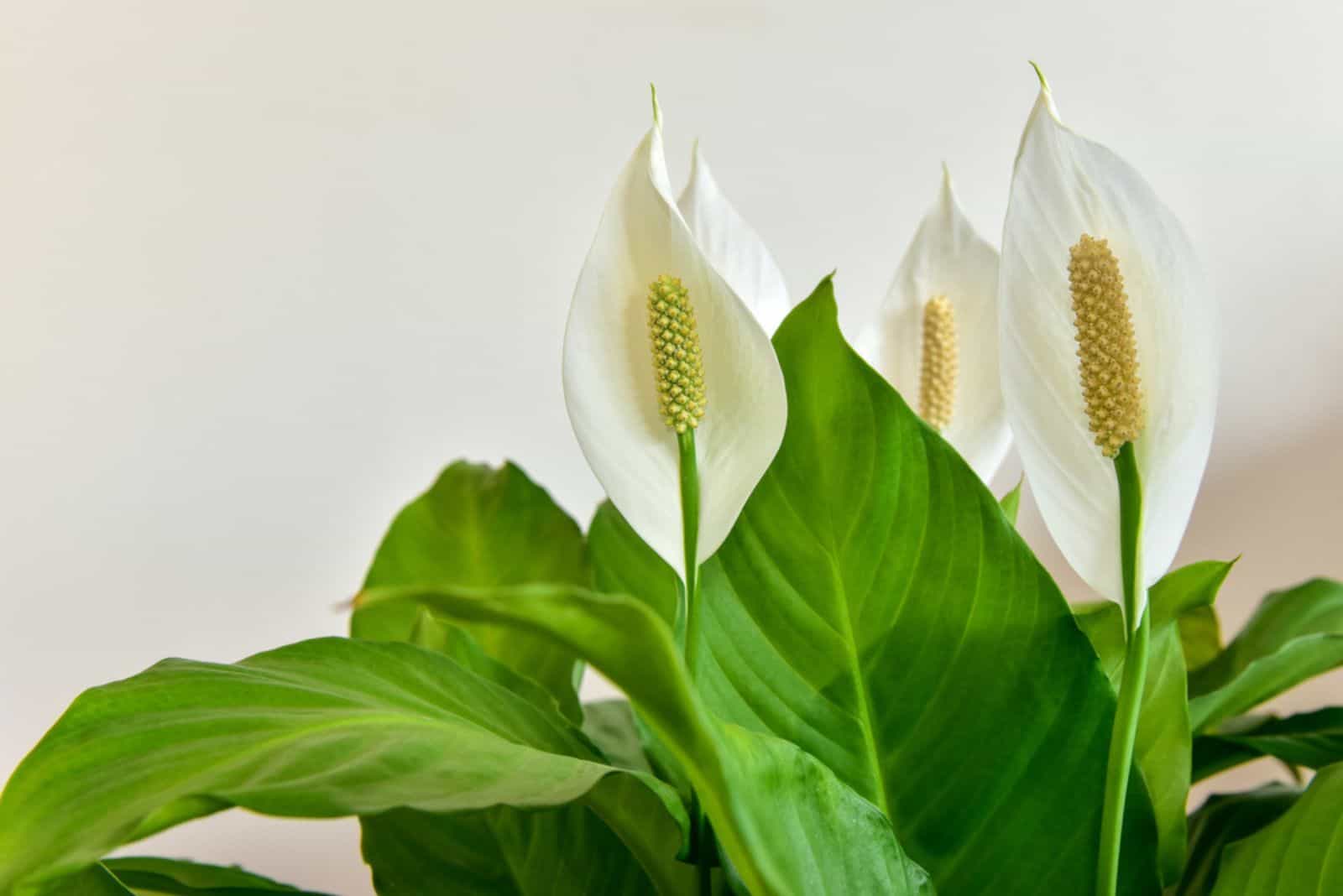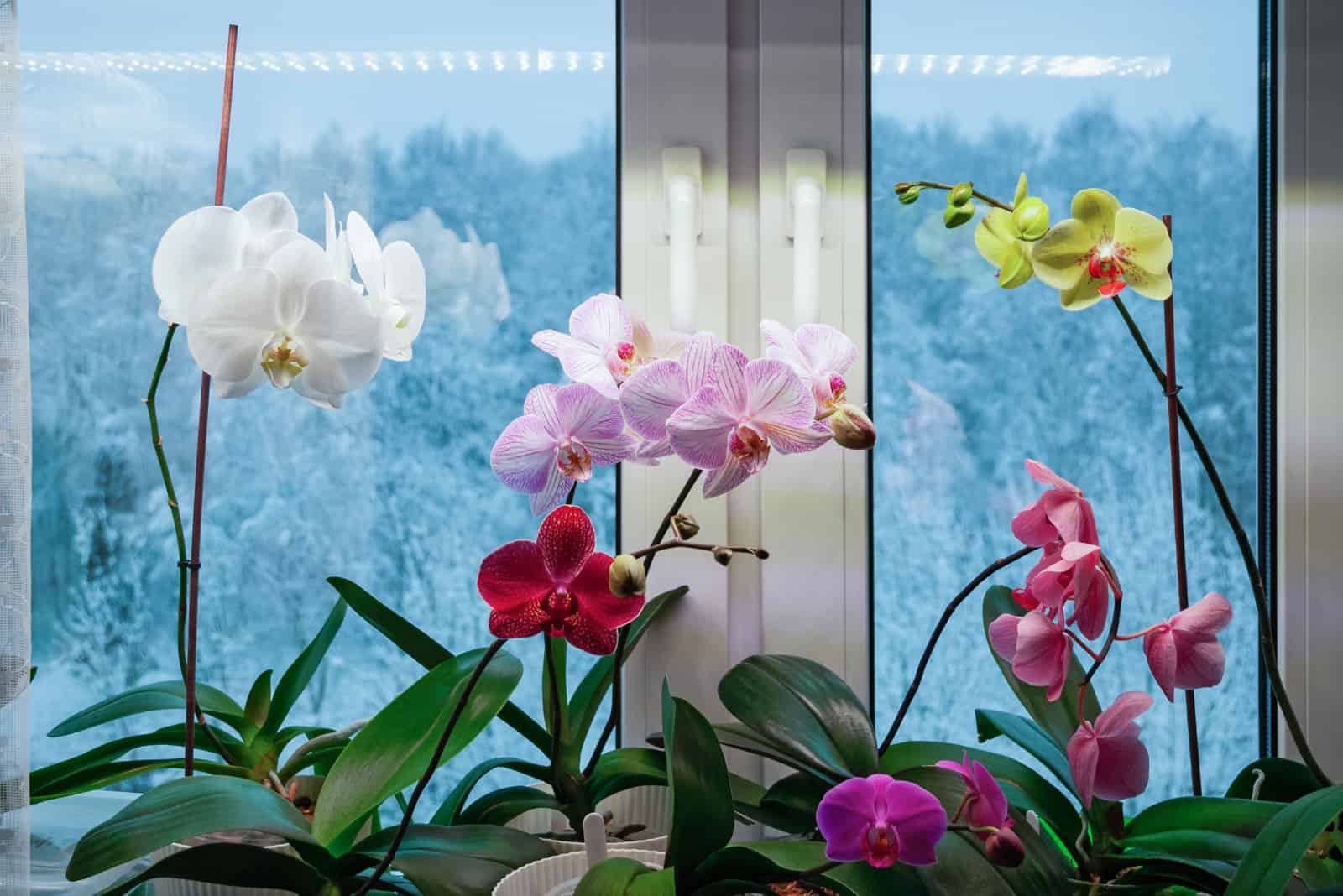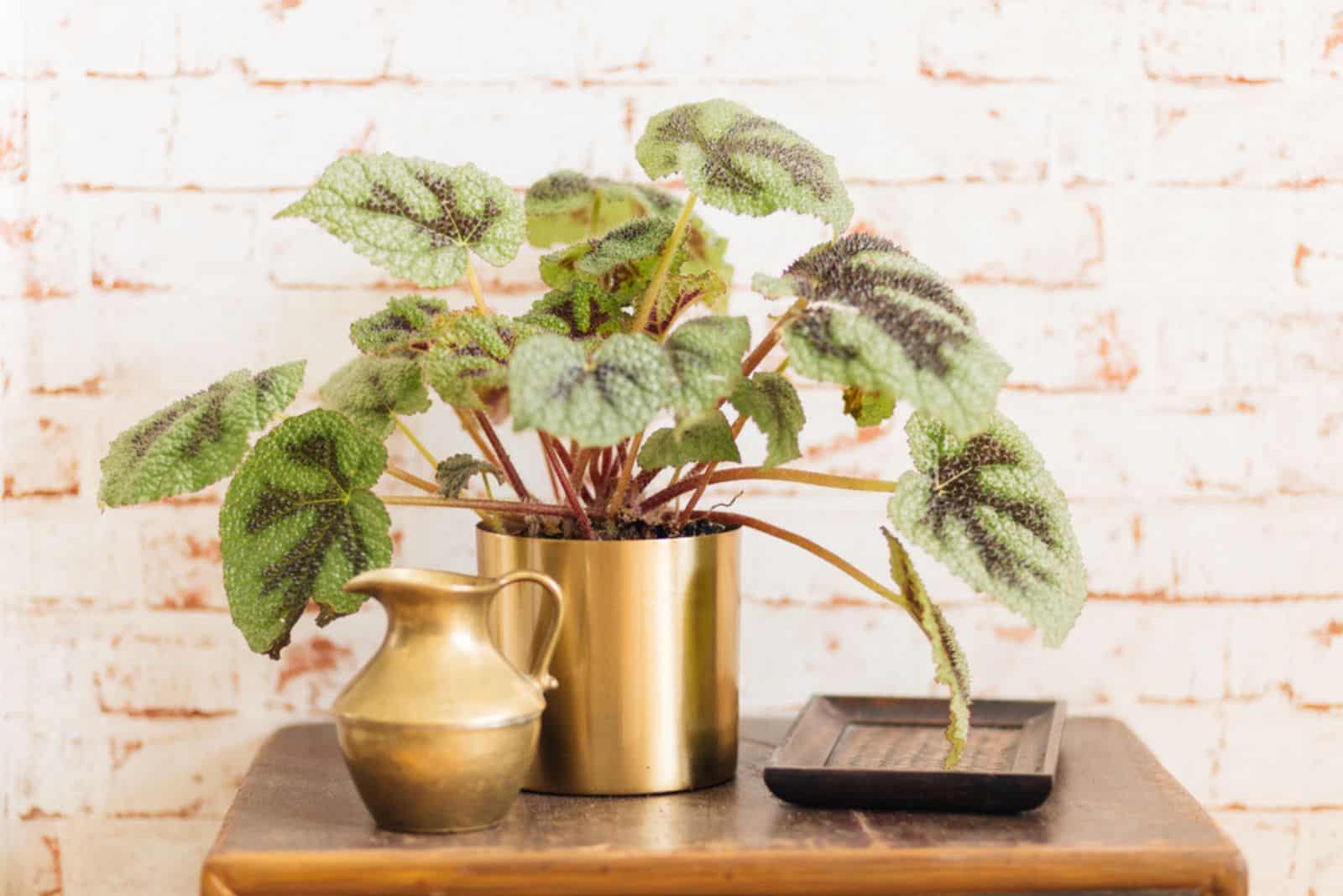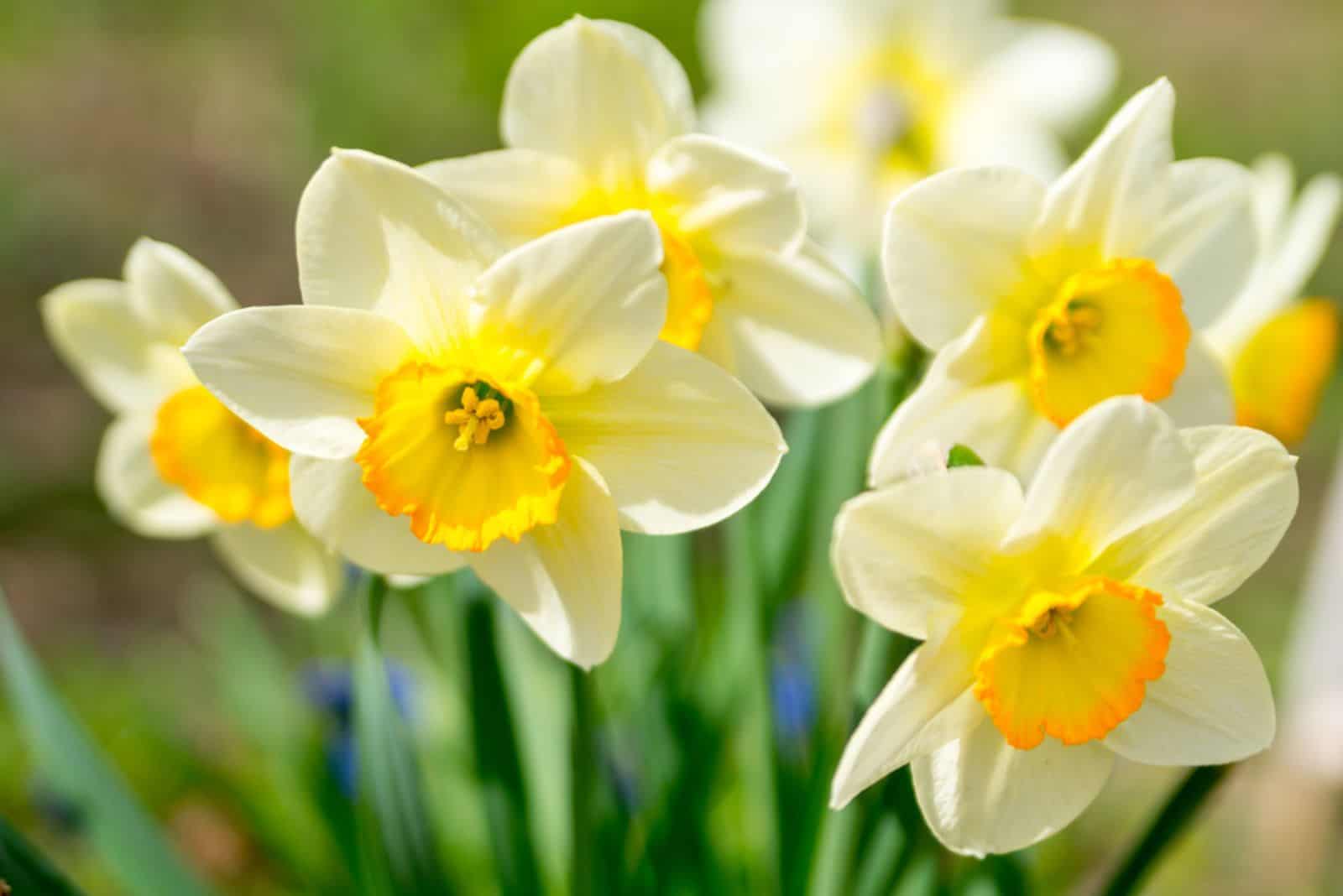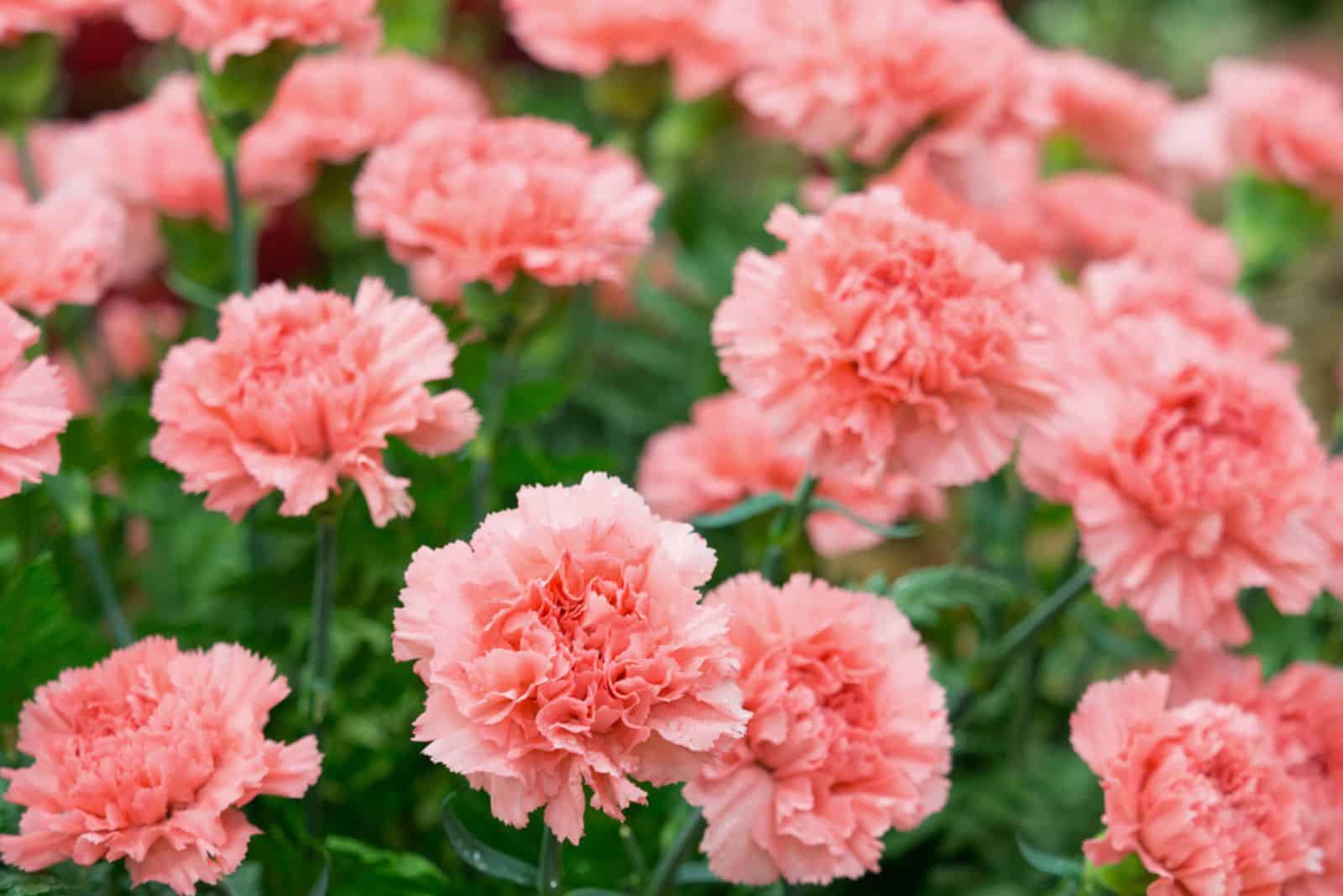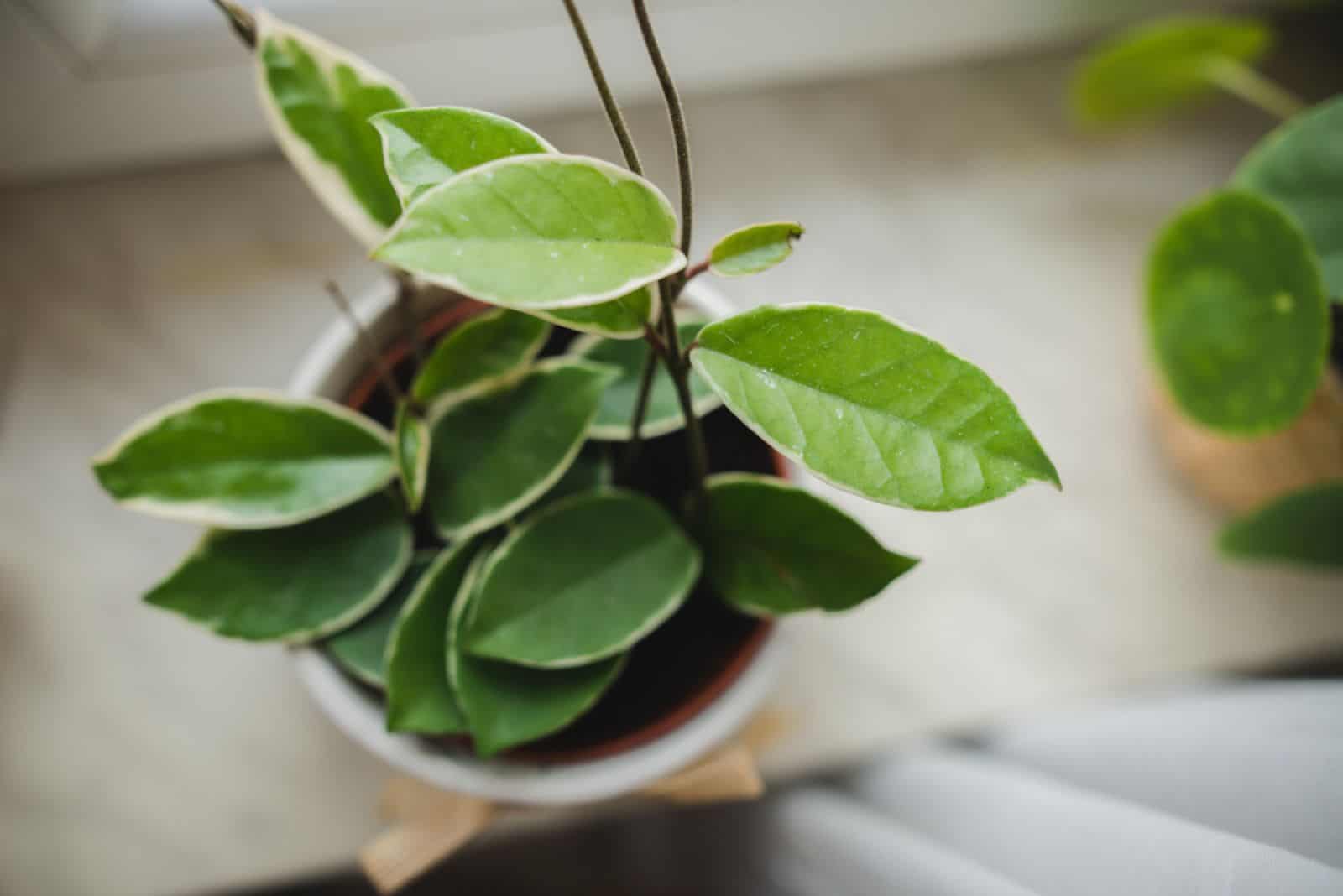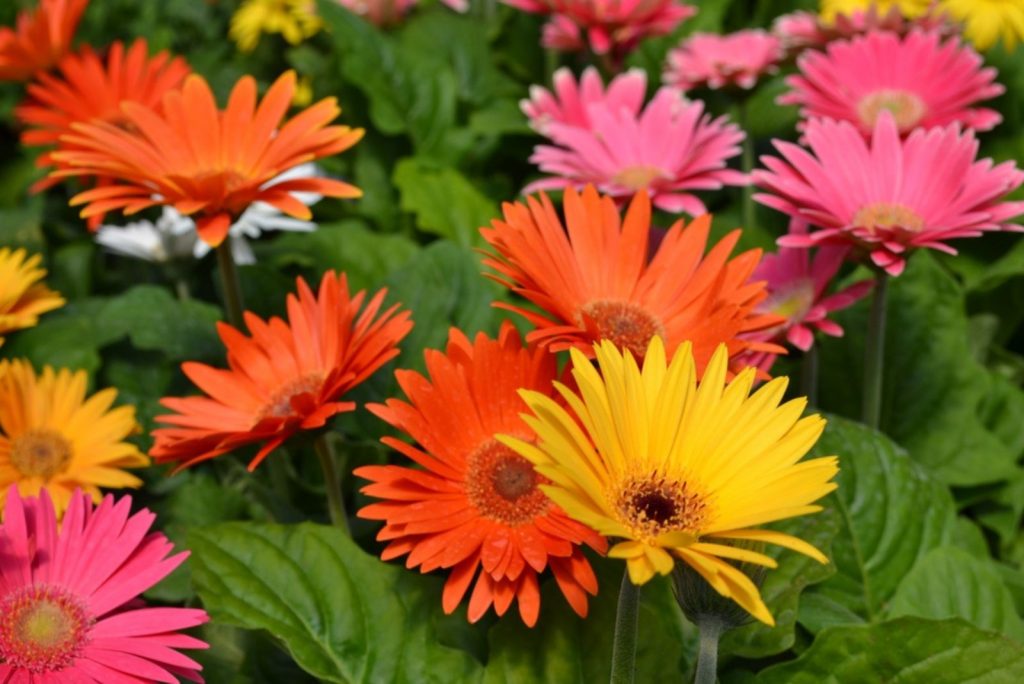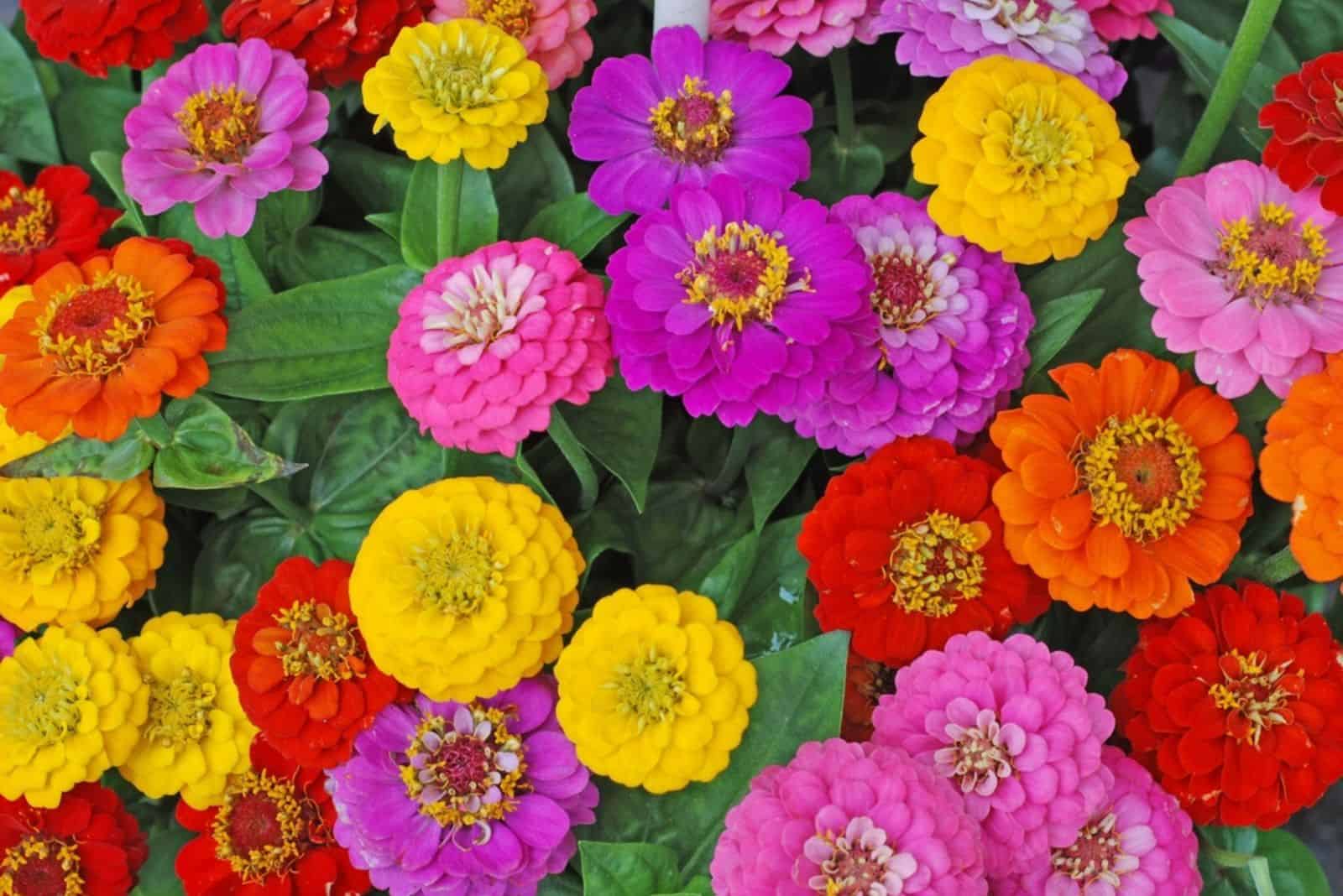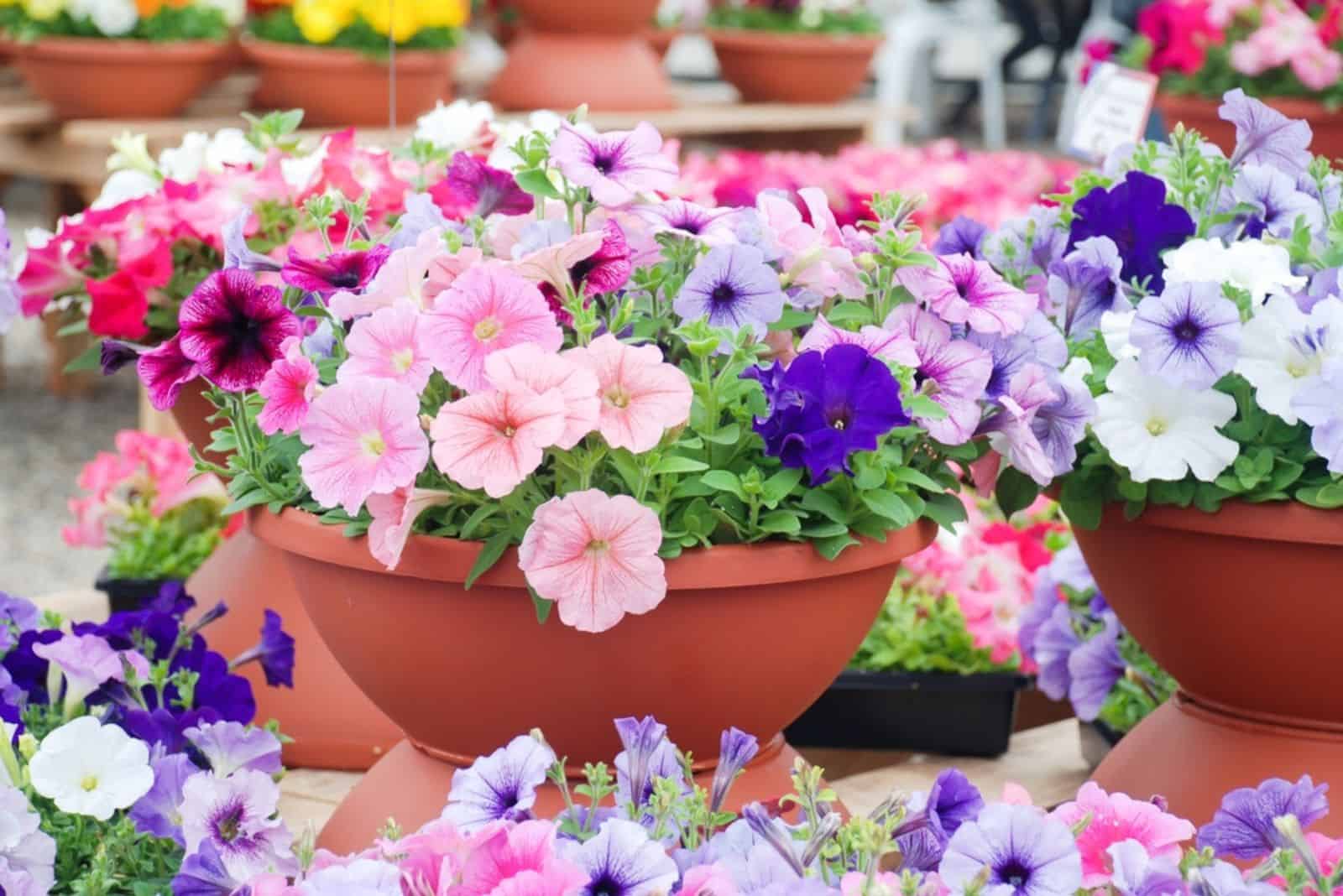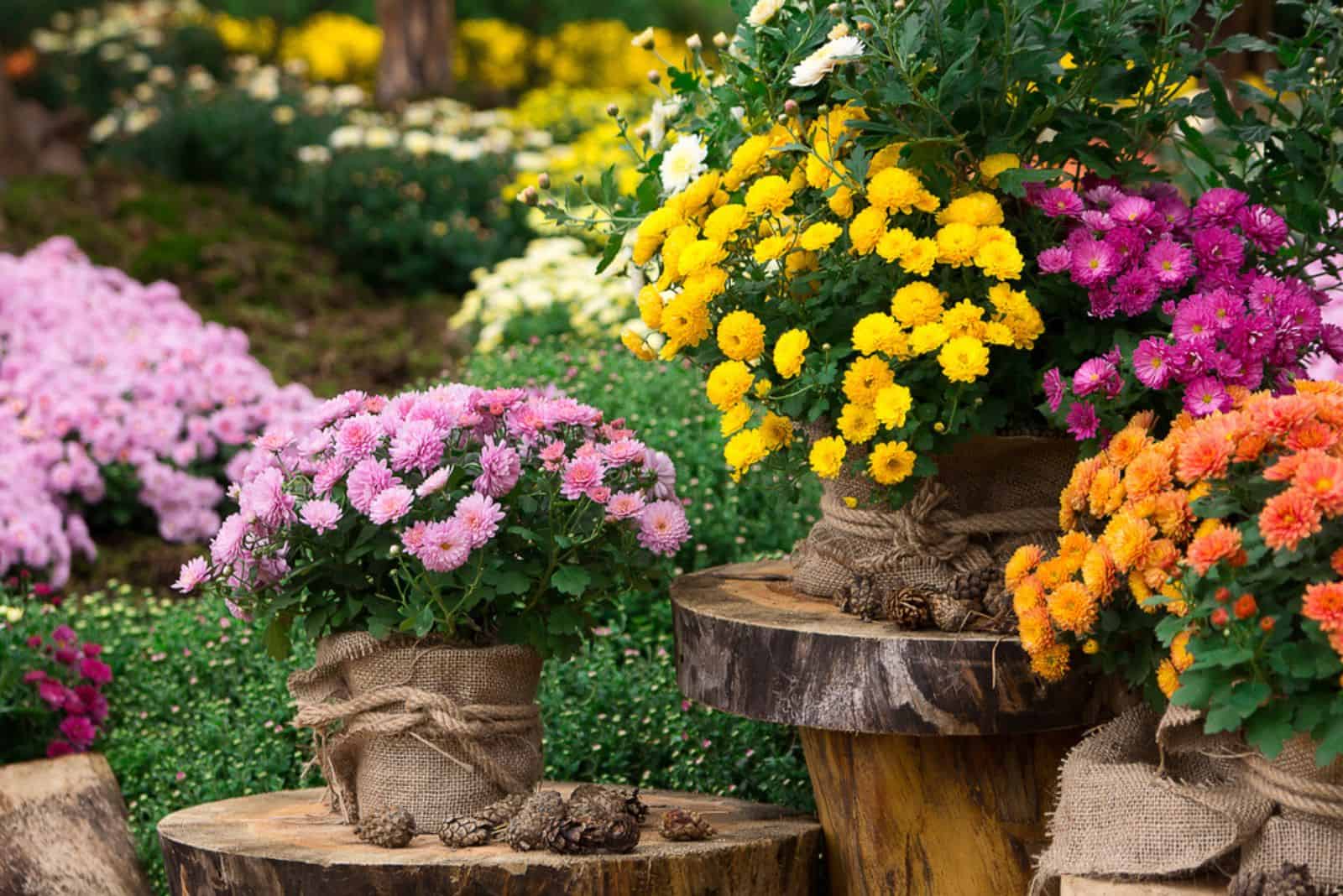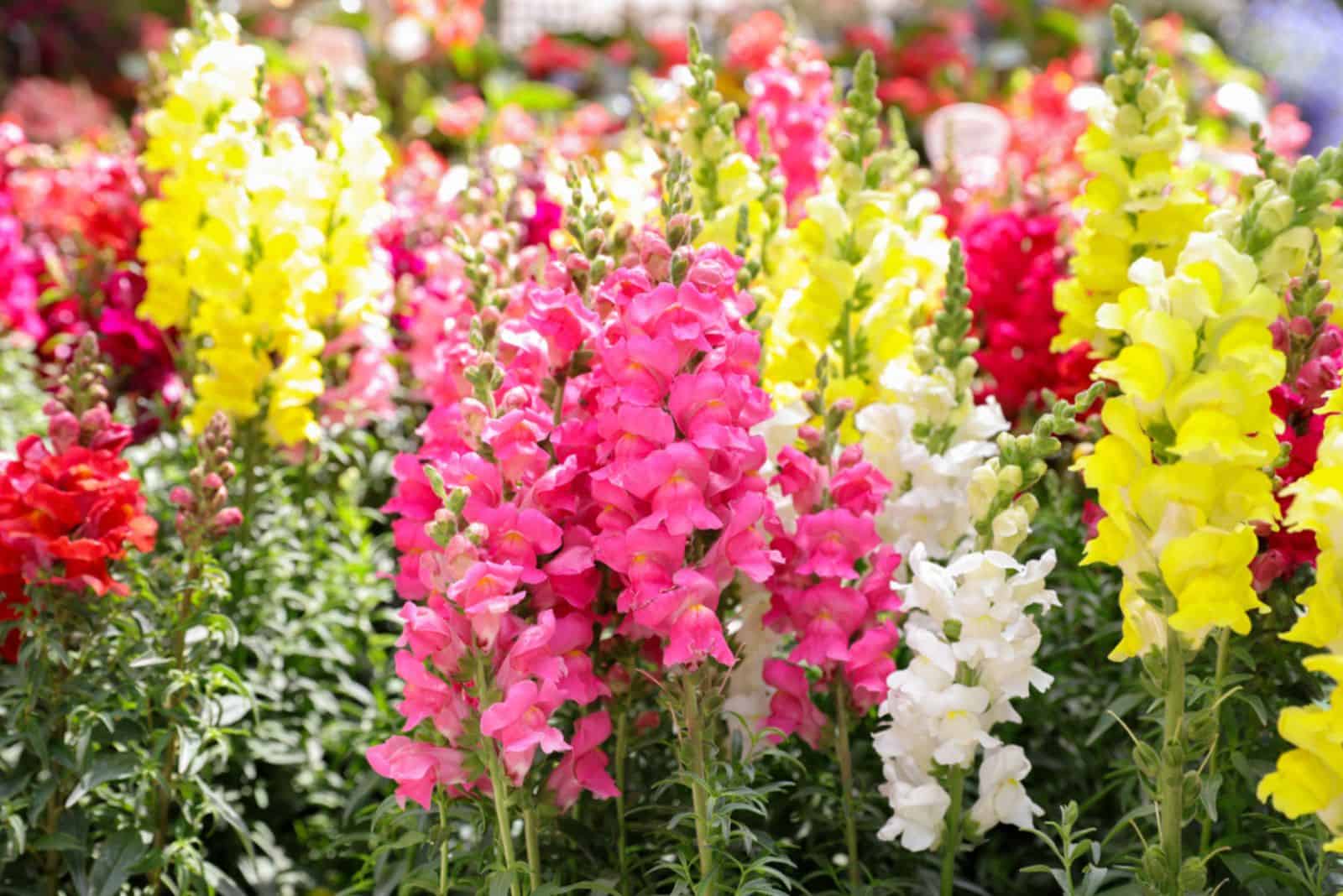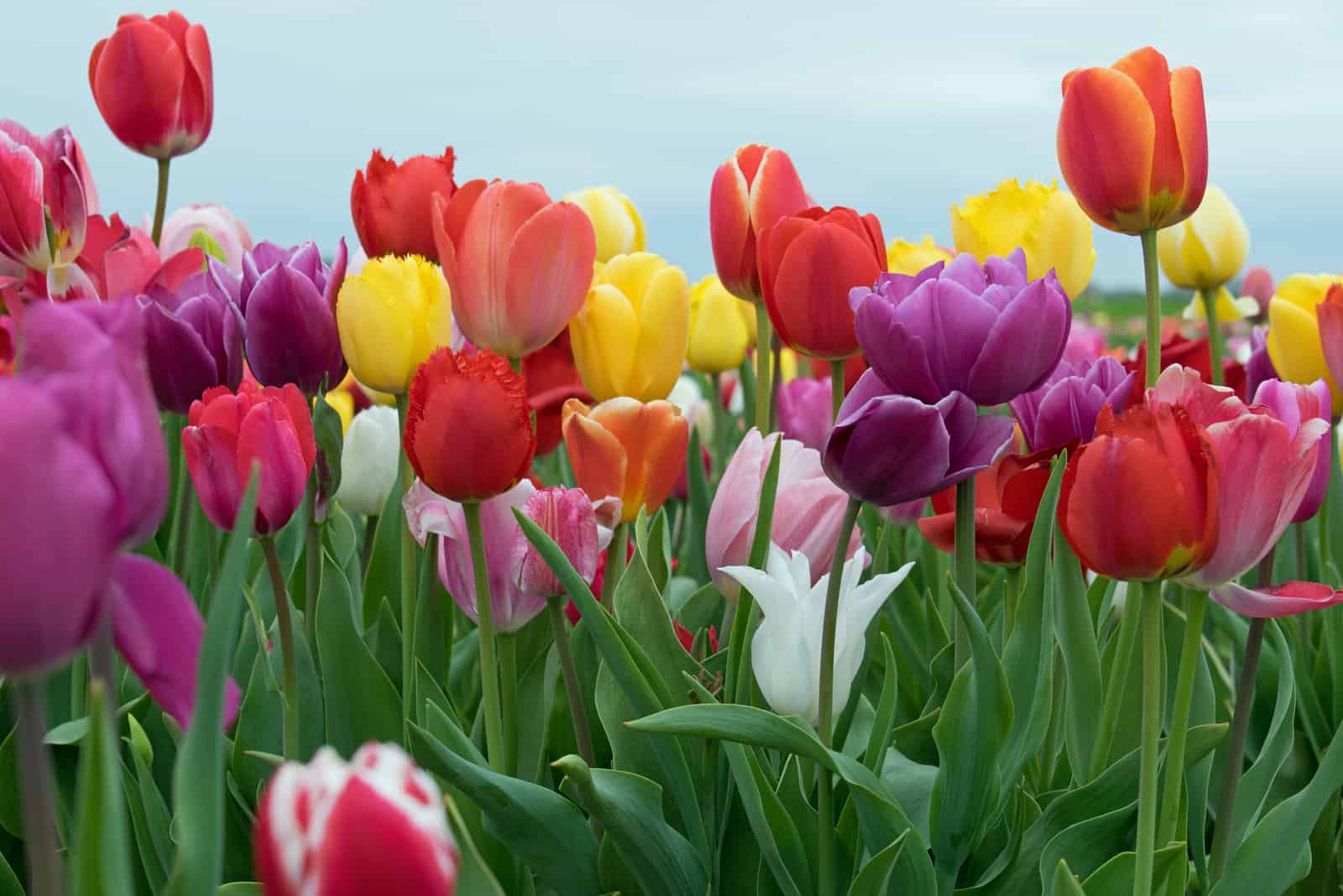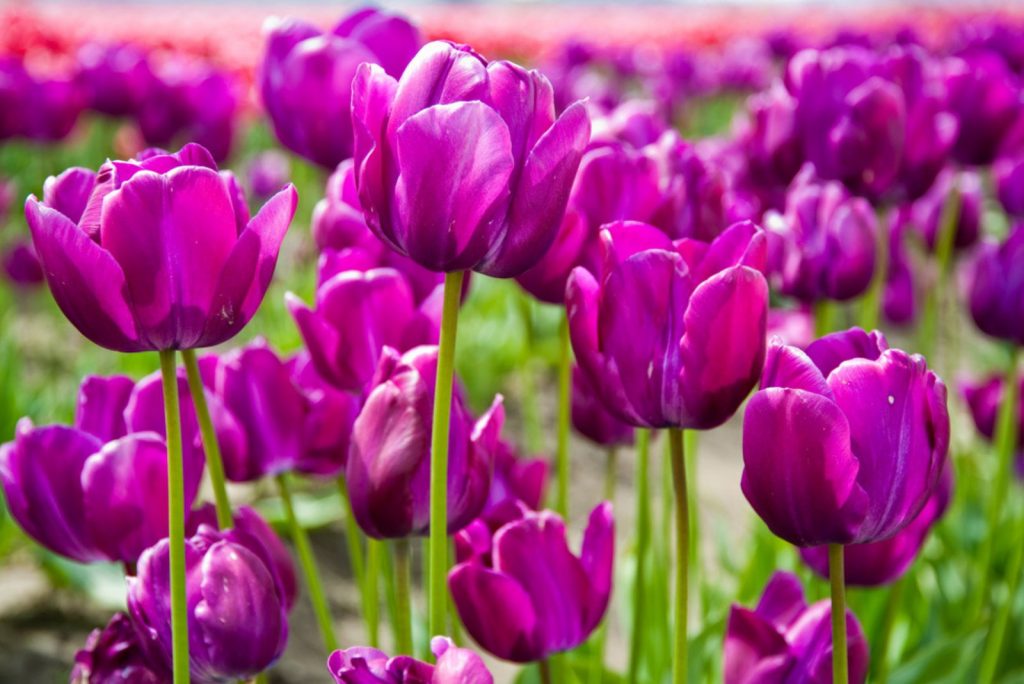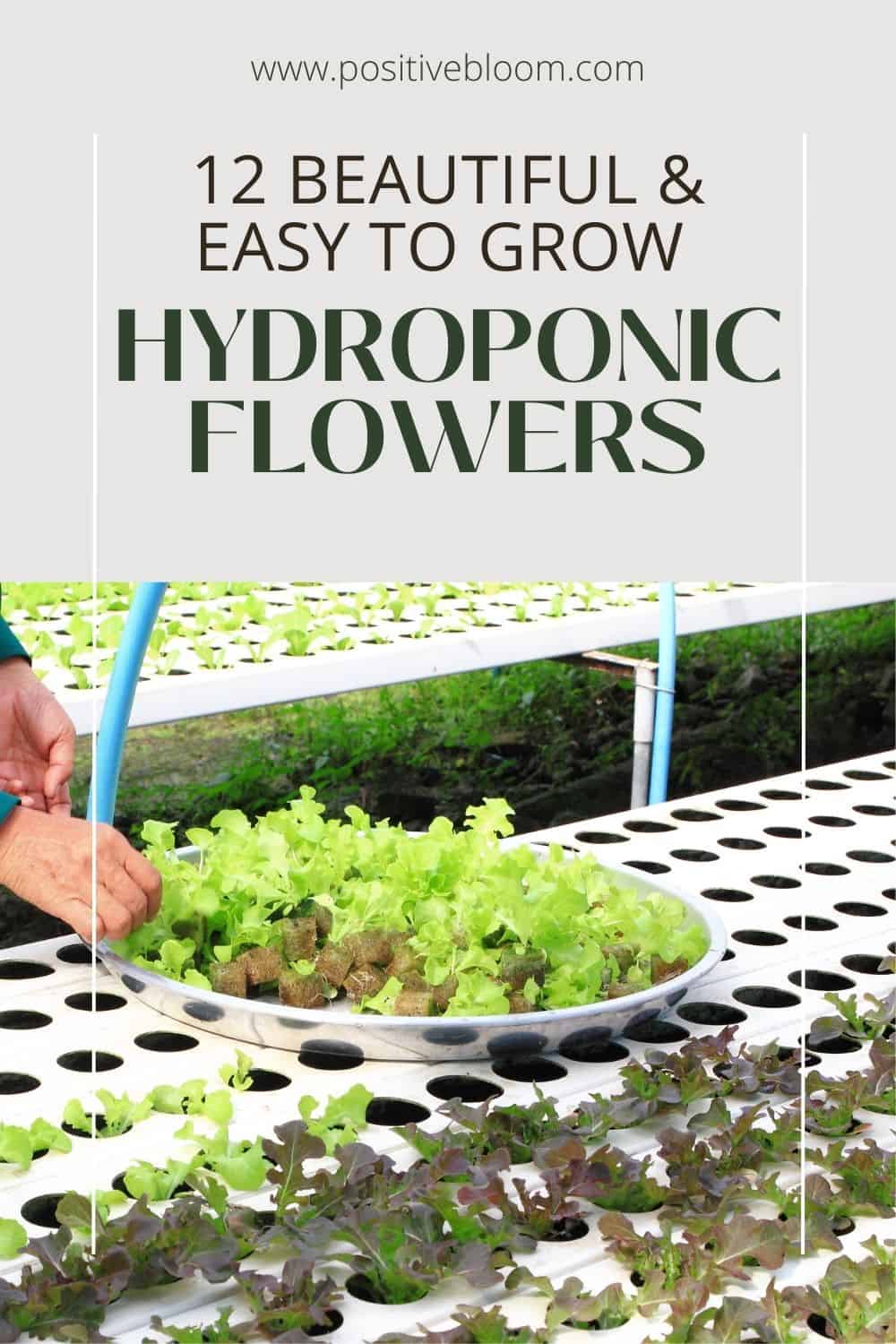Hydroponic gardening is an ideal solution for gardeners that don’t have enough space to grow lots of veggies, fruits, and flowers. Even though setting up a hydroponic system might look complicated, it is actually quite easy nowadays; especially with easy-to-make toolkits for beginner gardeners (you can also try to make a DIY hydroponic system!).
Hydroponic growing gives you more control over the growing conditions — first of all, you won’t have to worry about the growing medium and finding the perfect soil. You also won’t have to worry about weed growth and pest infestations.
With hydroponics, you can adjust nutrition for each type of plant so that they all receive the nutrients they need for proper growth and development. This way, you will be able to grow flowers all year round!
Surprisingly, many of the flowers that are suitable for growing with hydroponics can easily be found in your local garden shop. Now, let’s learn about some of the prettiest hydroponic flowers!
The Prettiest Hydroponic Flowers
If you don’t have proper conditions or enough space to set up a flower garden, you can always try and grow flowers hydroponically. Some of the most popular flowers are suitable for growing in a hydroponic growing system, including peace lilies, orchids, sunflowers, begonias, daffodils, carnations, petunias, and more.
These beautiful flowers are relatively easy to take care of, especially when you can tailor the hydroponic nutrient solution they receive.
Let’s take a closer look at some of the prettiest hydroponic flowers.
1. Peace Lily
The Peace lily, also known as Spathiphyllum, originates from tropical regions of southeastern Asia and both Americas. It produces mesmerizing foliage with an intense green color that combines perfectly with the unique-looking white flowers.
In fact, the modified leaf, known as a “spathe,” which is often white but can occasionally be red, gives this unusual plant its name. The “spathe” serves as a beautiful backdrop for the “spadix,” a tall blossom that rises from the center of the leaf.
This flowering plant can be easily grown indoors due to its moderate care requirements, and it can also be grown in hydroponics!
How To Grow The Peace Lily In Hydroponics
First of all, you should be careful when it comes to the type of water that you are using for your plants. If you are using tap water, it is most likely that your peace lily will end up drooping since it is quite sensitive to the chemicals found in tap water.
You can either use filtered water or leave tap water in a bowl overnight so the chlorine can evaporate.
Ensure that the roots are clean since they usually come as potted plants.
Peace lilies can easily be grown with the Kratky method — a simple hydroponics method that involves putting the nutrient solution in a jug. However, be careful not to dip your plant too deep. Make sure that only the root system is submerged.
For more information regarding the Kratky method, check out this video:
2. Orchid
You probably already know that growing orchids can be troubling since they are needy flowers sensitive to any sudden changes. However, they are definitely one of the most exquisite plants that you can grow indoors, which is why they are so popular.
They will blossom all year long if you provide them with all they need. Additionally, they are available in a variety of colors, such as yellow, pink, variegated, blue, white, and red. You may even see a black orchid!
These plants are epiphytes, which means that their roots are suitable for growing in the air and not in the soil. This is why they grow best in hydroponics, but can also be grown with aeroponics — the hydroponic approach is where a nutrient solution is sprayed onto plant roots. Other plants, like greeneries, are usually grown in nutrient film technique (NFT) systems.
How To Grow Orchids In Hydroponics
First of all, you will have to provide them with bright light. Your orchid might droop if it is kept in direct light. If you are using a wick system or deep water culture (DWC), then you should use hydroponics coco coir as a growing medium.
You should also put your orchid in a transparent tank since its roots need to receive light in order to photosynthesize. The roots should never be left in standing water, so leave a safe gap between the water level and the tip of the roots.
These plants like humid environments, so make sure that the humidity levels never drop below 50%. You can mist your plant in the evening if the humidity is low.
Introducing a fungus is also a good idea since it can help your plant to grow and expand. Orchids have a symbiotic relationship with a fungus called orchid mycorrhiza. These fungi can also be used when growing plants in soil — they allow easier water and nutrient absorption from the soil.
I would also suggest that you maintain temperatures between 60 and 80 degrees Fahrenheit. Orchids are quite sensitive to lower temperatures and sudden temperature changes.
3. Rex Begonias
Begonias are flowering plants that produce stunning, vivid flowers. It is easy to cultivate them both indoors and outside. The Rex Begonia has gorgeous, deep red blossoms that can liven up any space. Although it is native to Southeast Asia, this plant can thrive anywhere if the growing conditions are right.
In fact, these flowering plants are also popular due to their thick and fibrous leaves that come in a variety of colors, such as red, pink, silver, maroon, gray, and green.
If you don’t have much space in your garden, you can always try and grow begonias in a hydroponic system!
Here is how you do it.
How To Grow Begonias In Hydroponics
Provide them with enough space for growth since they are fast-growing plants that can reach up to 24 inches in height. The leaves can also grow to about 5 inches long, so make sure that your plant has enough space to spread its lovely leaves and flowers.
Keep the humidity levels high, and you can also mist the plant early in the morning.
Make sure that the temperature is between 60 and 85 degrees Fahrenheit and that the pH levels are between 5.7 to 6.2.
When it comes to light conditions, they are easily adaptable. They grow well in all types of light, including natural light, shade, and full sun, and bloom most profusely and beautifully in the morning and in the afternoon shade.
4. Daffodils
The Narcissus genus includes daffodils, and they typically come in yellow and white.
The plant has a distinctive look and is a symbol of cancer organizations around the world. Daffodils symbolize desire, love, and friendship, and they are also popular Greek flowers.
Daffodils are a fairly simple plant to grow. They need direct sunlight or some shade. In addition, they can even be grown in hydroponics.
The “Yellow trumpet daffodil” cultivar is the most popular. They are usually used as cut flowers.
It is crucial to keep in mind that because daffodils exude a poisonous sap, they cannot be paired with other flowers in a container.
How To Grow Daffodils In Hydroponics
Daffodils are acid-loving houseplants that require pH levels of 6 to 6.5 for optimal growth. You will have to store them somewhere dark and cool once they go dormant if you choose to grow them hydroponically.
Before removing the bulb from the container, ensure that all the leaves have dried out. Once a flower has wilted, there is no need to deadhead it; however, if you do, your plant will focus more energy on fattening the bulb.
5. Carnations
On Valentine’s Day, carnations are a common flower to offer your loved ones, especially red ones, since they represent love.
They do, however, have a whole different meaning based on colors. For instance, it’s a Christian tradition to give white carnations to symbolize a mother’s strength.
According to legend, this plant grew from the spot where Mary’s tears fell as she watched her son crucified.
Carnations are among the well-known Greek flowers with mythological associations, and there are several myths associated with this plant.
As soon as this beautiful plant blooms in late spring, your life will be filled with joy. Cut flowers are another thing that all growers adore, especially because they can survive up to several weeks.
Read also: 18 Flowers That Represent Strength Perfect For Any Garden
How To Grow Carnations In Hydroponics
Growing carnations hydroponically is relatively easy. They need about five to ten hours of light, so using grow lights is quite convenient. They like to stay in mild temperatures, ideally from 55 to 65 Fahrenheit during the day and 40 to 45 during night time.
Ebb and flow, deep water culture, and a drip system with individual tanks are the best techniques for growing hydroponic carnations. You can also use rock wool starter plugs, which are ideal for plant seedlings.
You will have to ensure that the pH levels are around 6 in your nutrient solution.
6. Hoya
Hoyas are breathtaking perennial plants that produce star-shaped flowers and lovely green foliage. Hoya varieties come in several varieties which vary in appearance. Some of them are fuzzy, some have thick leaves, and they could be either glossy or matte.
They come in a variety of colors, and you can see ones with blooms that are red, lilac, pink, yellow, or white, and will work wonders for your concept design.
Hoya plants are relatively easy to take care of — my hoya Macgillivrayi keeps on growing and blooming even though I keep it in low light conditions. These pretty plants can also be grown in hydroponics, and many florists actually grow them in this manner.
How To Grow Hoya Hydroponically
Keep their pH levels around 5 to 6.5. Since they are tropical plants, hoyas enjoy higher humidity. Therefore, you should choose a system that can provide humidity for your hoya.
These plants can also tolerate somewhat lower temperatures, but they don’t like temperatures lower than 50 degrees Fahrenheit or higher than 75 degrees Fahrenheit.
7. Gerbera Daisies
The flowering plant known as the gerbera daisy (Gerbera Jamesonii) is unquestionably the most colorful on our list. They are adorable French flowers available in a range of colors. They dazzle gardens with their white, salmon, pink, purple, yellow, orange, and red tones from the end of April to the beginning of October. Some gardeners go a step further and only cultivate bicolor varieties.
But these plants are also known for releasing oxygen at night and eliminating dangerous airborne toxins, including formaldehyde, benzene, and trichloroethylene. Thus, they won’t just add color to your living room; they’ll also improve the quality of the air!
How To Grow Gerbera Daisies In Hydroponics
These plants should not be kept in direct sunlight as they can easily get damaged. Therefore, you should grow them in partial shade or indirect light.
They can grow in temperatures from 40 to 70 degrees Fahrenheit. Grow them away from ethylene-producing plants – these include apples, broccoli, eggplant, lettuce, and sweet potatoes. The flowers will wilt more quickly as a result of the ethylene they release.
If you are growing them in soil, make sure that you add fertilizers, as they love nutrient-rich soil, and add some perlite since they also need well-draining soil.
8. Zinnias
Zinnias are excellent companion plants because they are frequently grown as border plants and attract pollinators. There are many different types of zinnias available, and new hybrids appear to be developed every day!
They have numerous kinds of spherical, vividly colored blooms. There are attractive dwarf kinds, as well as taller varieties that can reach heights of 4 feet. They can also reseed themselves each year!
The fact that zinnias can endure any situation is their most valuable quality. They can be grown in numerous garden environments due to their wide variety of vibrant hues and ability to survive hotter climates.
You should choose the more compact kinds from among the many available options for your hydroponic garden.
How To Grow Zinnias In Hydroponics
Be sure to provide them with adequate watering as they can easily get overwatered, which often leads to rotting. Luckily, they are drought-tolerant and can withstand some time without water. You need to ensure a lot of light during all zinnia growth stages, but they can also adapt to receiving about 6 hours of light during the day.
The best temperature for zinnias would be between 75 to 85 degrees Fahrenheit, though they can tolerate lower temperatures of around 60 degrees Fahrenheit. The preferred pH range is from 5.5 to 7.5.
Pinch the plant’s growth tip when it is young to get bushier plants.
9. Petunias
Petunias are a common feature in flower gardens all around the world. Their colorful, funnel-shaped blossoms are a lovely addition to flower beds. When grown in hanging baskets, petunias look absolutely dreamy. While petunias often bloom in the summer, some types can bloom all year round. In USDA zones 9 to 11, they are considered perennials.
Resentment and fury are among the most frequent interpretations of the Petunia, along with optimism, longing, and calm.
If you wish to give a Petunia as a present, you should be aware that the meaning of the flower is greatly affected by the color of the bloom. If you want to know more, then check out this article about the petunia’s meaning.
How To Grow Petunias Hydroponically
These plants need at least 6 hours of light during the day if you want them to grow and thrive. If you have just planted the seeds, ensure that they are warm enough for the germination to occur without any issues.
Once they are established, petunias prefer somewhat cooler temperatures ranging from 57 to 65 degrees Fahrenheit. The pH should be between 6 and 7.
These plants really like plant food, so make sure that you provide them with all the nutrients necessary for their growth. You can also grow them in aerogardens.
Check out this video for more information about growing petunias in aerogardens:
10. Chrysanthemums
Chrysanthemums, sometimes referred to as mums, are stunning flowering plants. This plant is more than just aesthetically pleasing, however; it can also produce oxygen, eliminate benzene, and ward off pests like geckos, fleas, ants, ticks, and more.
According to NASA research, these plants can get rid of about 76 micrograms of benzene, which makes them one of the best plants for improving the quality of air indoors.
These plants are also relatively easy to grow, and you can even try and grow them in hydroponics!
How To Grow Chrysanthemums In Hydroponics
The more light it receives, the more flowers will emerge. These flowering plants grow best when they are exposed to at least 7 hours of sunlight each day, though they wouldn’t mind if you keep them in light for 12 hours a day.
Ideally, these plants should receive about 9 hours of light during the day.
Chrysanthemums are perennials, but when grown in hydroculture, they face the risk of becoming infected with the parasitic Phytium alga within three years. So, after two years, take cuttings and cultivate them hydroponically using peat moss.
11. Snapdragons
The vibrant and pastel colors of the snapdragon flower include pink, purple, red, orange, peach, yellow, white, and bicolor.
The term “antirrhinon”, which in Greek means “nose-like,” is the source of the name antirrhinum. They both mean different things.
The ability of one to grow on unsuitable rocky ground is associated with grace and strength, while the other denotes cleverness.
Therefore, it shouldn’t be surprising to hear that this plant was regarded in mythology as a protective charm against deception.
How To Grow Snapdragons In Hydroponics
Snapdragons can grow quite tall — these flowering plants usually grow from 6 to 46 inches depending on the variety, which is why you have to provide them with enough space for growth and development.
These plants need adequate watering; they don’t like to sit in a moist medium, which is why you should wait until the growing medium has dried out before watering again.
They like to grow in full sun exposure, but they can also adapt to growing in partial shade. The pH levels should be from 6.2 to 7.
12. Tulips
Before tulips became the most popular flower in the world in the 17th century, they flowered extensively in the Tian Shan mountains. Since ancient times, these intriguing blossoms have drawn attention and been seen as a symbol of new beginnings and a declaration of love.
The Persian word for them is “debland”, and their unusual bulbs display their individuality and resemble turbans.
They represent luck, wealth, and rebirth, though different tulip colors have different meanings.
You have probably seen them growing in gardens, but tulips can also be grown hydroponically. Even though it may seem unusual to grow tulips outside of a typical growing medium, doing so can be simpler because you won’t have to worry about plant spacing, drainage, aeration, or any of the other factors involved in growing plants in conventional soil.
How To Grow Tulips Hydroponically
This popular flower demands plenty of sunlight, but you should avoid exposing it to direct sunlight whenever possible. Bright indirect sunlight is ideal because it won’t harm the tulip’s fragile leaves, stems, or bulbs.
To ensure that the entire plant receives an equal amount of sunlight, you should also rotate your tulips around once a week.
Water should be changed frequently, but avoid submerging the bulbs; keep at least one-third of them above the water line. Don’t use tap water for your tulips as it contains chlorine that can harm your plant. The best water would be rainwater or filtered water.
Although they can tolerate somewhat warmer temperatures (don’t ever go beyond 70 degrees, though), hydroponic tulips thrive best in temperatures between 60 and 65 degrees Fahrenheit.
Frequently Asked Questions
1. What is a hydroponic system?
The term “hydroponic” refers to plant-growing methods that do not require soil, such as hydroponics. Hydroponic systems consume less water than traditional soil-based ones. Faster growth and higher yields are possible with hydroponic gardening than with traditional organic gardening and soil-based farming techniques. Other techniques include aquaponics and aeroponics.
2. Which flowers are suitable for hydroponics?
There are numerous flowers that can be grown hydroponically. Some of the prettiest flowers that are suitable for growing in hydroponics include orchids, begonias, tulips, carnations, snapdragons, peace lilies, petunias, zinnias, daisies, hoyas, daffodils, etc.
3. What are the benefits of hydroponics?
According to studies, plants grown in hydroponic systems are typically more robust and healthy than those grown in soil. Hydroponic plants are less susceptible to plant diseases and pest infestations.
This also saves water since plants grown hydroponically need less watering because water is constantly circulating.
Statistics show that plants cultivated in a hydroponic environment produce more, are healthier, and contain more nutrients. If you want to cultivate plants with small root systems, especially if you want to grow them vertically, hydroponics is a great option to save space.
You can save a lot of space by using hydroponics, and will also get better production, save money and time, and conserve water.
To Sum Up
Hydroponic flowers are easy to grow, especially because you don’t have to worry about what soil mix to use and what fertilizers and nutrients are needed for that specific flowering plant.
Growing plants and flowers hydroponically is generally a lot easier than traditional farming, though you will have to spend some money to set everything up. However, it is totally worth it!
I had a lot of trouble growing root vegetables, and now my hydroponic carrots just keep on growing and growing!
Everything takes time, you just have to follow the instructions and provide your plants with the best possible care. With hydroponics, you will make the environment much more suitable for growth, and you will get to enjoy lots of delicious fruit at the end.
That’s all, folks. I hope this article was helpful.
Until next time!
Like this post? Share or pin it for later!


